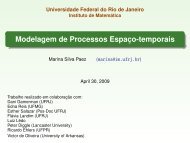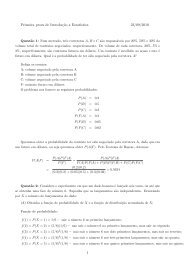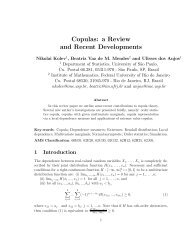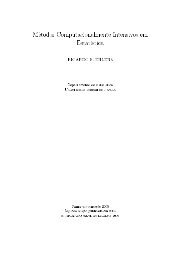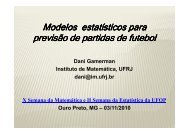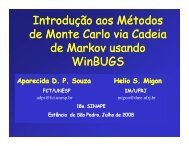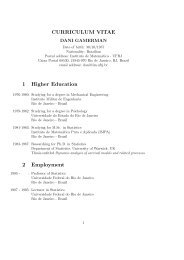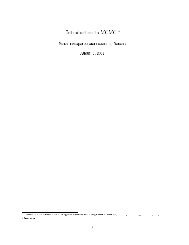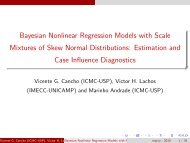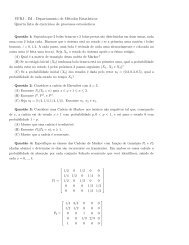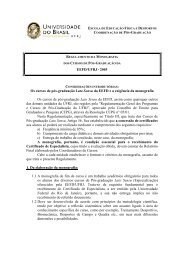Untitled - UFRJ
Untitled - UFRJ
Untitled - UFRJ
You also want an ePaper? Increase the reach of your titles
YUMPU automatically turns print PDFs into web optimized ePapers that Google loves.
Product Partition Models with Correlated ParametersRosangela H. LoschiDepartamento de Estatística, Universidade Federal de Minas GeraisIn time series, Bayesian partition models aim at partitioning the entire observation period into disjointtemporal clusters. Each cluster is an aggregation of sequential observations and a simple model is adoptedwithin each cluster. The main inferential problem is the estimation of the number and locations of thetemporal clusters. The popularity of partition models is justified by its flexibility to analyze changepoint or clustering problems. However, its original formulation assumes a common parameter indexingthe distributions of the observations into the same temporal cluster. Furthermore, it also assumesindependence among the common parameters associated with different temporal clusters. This approachmay lead to an inaccurate identification of the number of clusters.We extend the well-known product partition model (PPM) for clustering analysis in the temporalcontext. We also assume independence among parameters in different temporal clusters, but contraryto what is assumed in the PPM, we consider that the observations in the same cluster have their distributionsindexed by different parameters. Although different, the parameters are similar for observationswithin a given cluster. This is done by adopting a Gibbs distribution as the prior specification for thecanonical parameters. As a result, the parameters within the same temporal cluster are correlated. Oneimportant advantage in allowing similar parameters within a temporal cluster is that, rather than havingan unknown dimension, the dimension of the parameter vector is fixed and equal to the time serieslength. This facilitates the numerical procedures used to obtain the posterior distribution.We carried out several simulations and real dataset analyzes showing that our model provides betterestimates for all parameters, including the number and position of the temporal clusters, even forsituations favoring the PPM.This is joint work with Renato M. Assunção and João V. D. Monteiro.16



